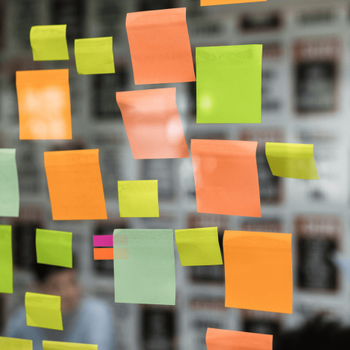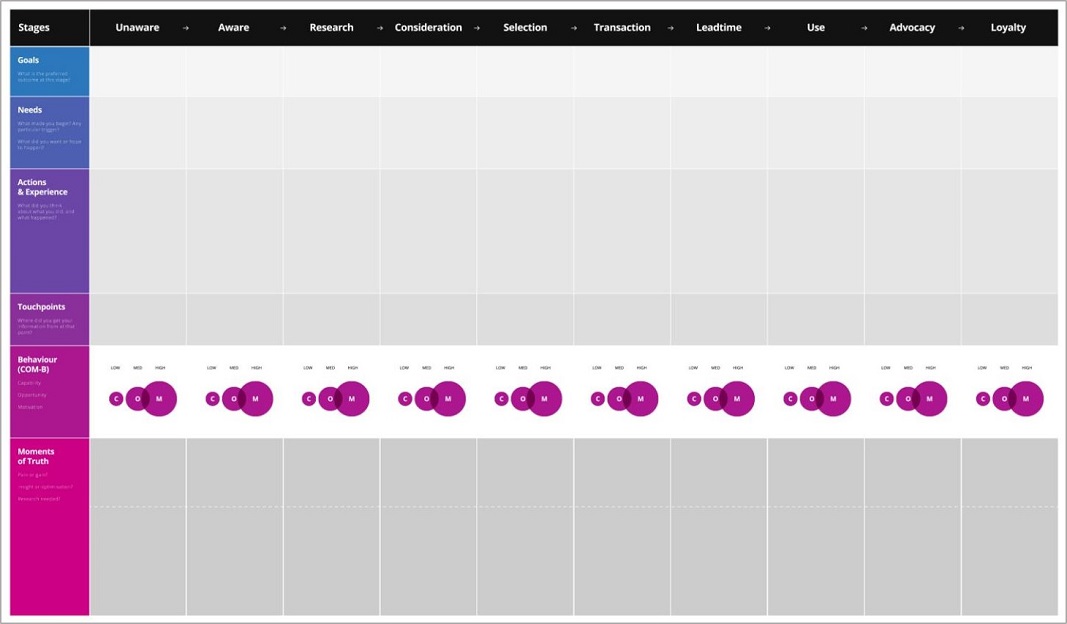
Customer experience journey mapping
Taking information about your audiences and summarising these into a visual 'map' allows you to analyse your audiences’ journeys and plan your digital marketing strategy better.

Learn about customer experience journey mapping and how we use the process to discover what users experience throughout their journey.
What is customer experience journey mapping?
A customer experience journey map (CXJM) is a visual representation of one or more customer journeys and touchpoints, together with the customers’ views of an organisation, business or brand at each stage. It is used to help understand the ecosystem and identify the ‘moments of truth’.
At Fresh Egg, customer experience discovery is all about understanding more about your customers’ experiences throughout their typical customer journey.
By learning more about this, you can then work on improving the experience, thereby increasing the satisfaction of existing customers and acquiring new ones.
A customer or audience journey is defined as the various stages that an individual passes through when performing a task that interacts with the organisation, business or brand. A journey often has several touchpoints and takes place over a variable length of time.
With customer experience journey mapping, we are looking to capture people’s experience around one or more elements of a ‘BOBIT’ – brand, organisation, business, issues and things.
When and how are CXJMs used?
As part of our customer experience discovery process, we first conduct empathy mapping exercises and then validate what we have learnt with audience interviews. The learnings from the interviews are then extracted and mapped into the CXJMs.
We use the maps to extract insights (especially from the ‘moments of truth’) to make specific recommendations as part of an ongoing CX and digital marketing strategy. Many of our clients have the maps on the walls of their offices to act as constant reminders of the audience’s needs and journeys.
What are the benefits of customer experience journey mapping?
A journey map illustrates the experience an individual has from the beginning of a journey to the end. They are useful for:
-
Highlighting clear ‘moments of truth’ – the point on the journey at which something is either good or painful for a customer
-
Preventing businesses trying to second-guess what their customer needs are and what they think about their experience, helping to validate existing data (or assumptions)
-
Providing a clear focus for a CX strategy (which would naturally follow this discovery work) then leads to improving the customer experience (based on learnings from the mapping)
-
Improving the resulting uplift in customer experience, leading to an uplift in the KPIs being tracked – whether these are direct sales, leads, customer engagement or brand awareness
Find out how we can help you better understand your customers
Fresh Egg's CXJM format
There are several versions already in existence, but we felt these could be improved. We, therefore, created our own version, which has the unique inclusion of a ‘behavioural’ element, using the recognised COM-B behavioural change framework.

The ten CX stages (columns)
The columns in the Fresh Egg journey map represent the commonly used ten customer experience stages:
-
Unaware - The person is unaware of the brand, organisation, business, issue or thing (BOBIT). They are just living their lives with no need to know about them at this stage
-
Aware - The persona is aware of BOBIT but has never had any reason to interact or think much about it. Awareness is often measured using brand recognition and is related to introspection too
-
Research - The person is curious about BOBIT and is finding out more about them, their products or their services. They will typically start to carry out some form of research at this stage
-
Consideration - The person has begun to compare BOBIT with other BOBITs to identify differences in service or product offerings, expanding their research and making more and more comparisons. At this stage, the range of possible options is still growing, and the persona is learning about the options available
-
Selection - The person is restricting or has narrowed down the possible options to select. The selection criteria could be based on delivery times, convenience etc. or other personal measures of suitability. A preference has been formed
-
Transaction - The person is engaged in an exchange with or related to the selected BOBIT. This might be an online purchase or a request for information, or signing up for something
-
Leadtime - The time between an exchange being made and taking receipt of the answer or goods. Leadtimes can be very short, e.g. online chat or long, e.g. shipping from another country
-
Use - The person has experience of using goods or services from BOBIT. They are knowledgeable about the product or service at this point from a user perspective
-
Advocacy - The persona wants to tell everyone how great BOBITs services or products are. They may or may not have used them. E.g. telling people about Tesla cars without ever using, experiencing or buying one
-
Loyalty - The persona has lifetime value to the BOBIT. E.g. through repeat purchases
The six experience elements (rows)
The rows are used to capture and detail the customer's experience (or audience member) at each stage of their journey. A series of questions are used when completing these rows:
-
Goals - What are the preferred outcomes at this stage?
-
Needs - What made a person begin? Was there a specific trigger? What did they hope would happen at this stage?
-
Actions & experience - What did they think about what they did, and what happened?
-
Touchpoints - Where did they get the information from at that point? What devices did they use
-
Behaviour (COM-B) - This row uses the COM-B behavioural model to assess the person’s behaviour based on three elements:
Capability – did they know what to do? How difficult was that?
Opportunity – where were they when you did that? Were other people involved?
Motivation – did they want to?
-
Moments of truth - What were the specific moments of pain (or gain) that a person went through at each stage

See our Ultimate Guide to Customer Journey Mapping
Use our guide to delve deeper into your visitors' motivations, attitudes, and behaviours to discover why potential patrons don't engage with your offering.
Do you have a challenge we can help with?
Let's have a chat about it! Call us on 01903 337 580